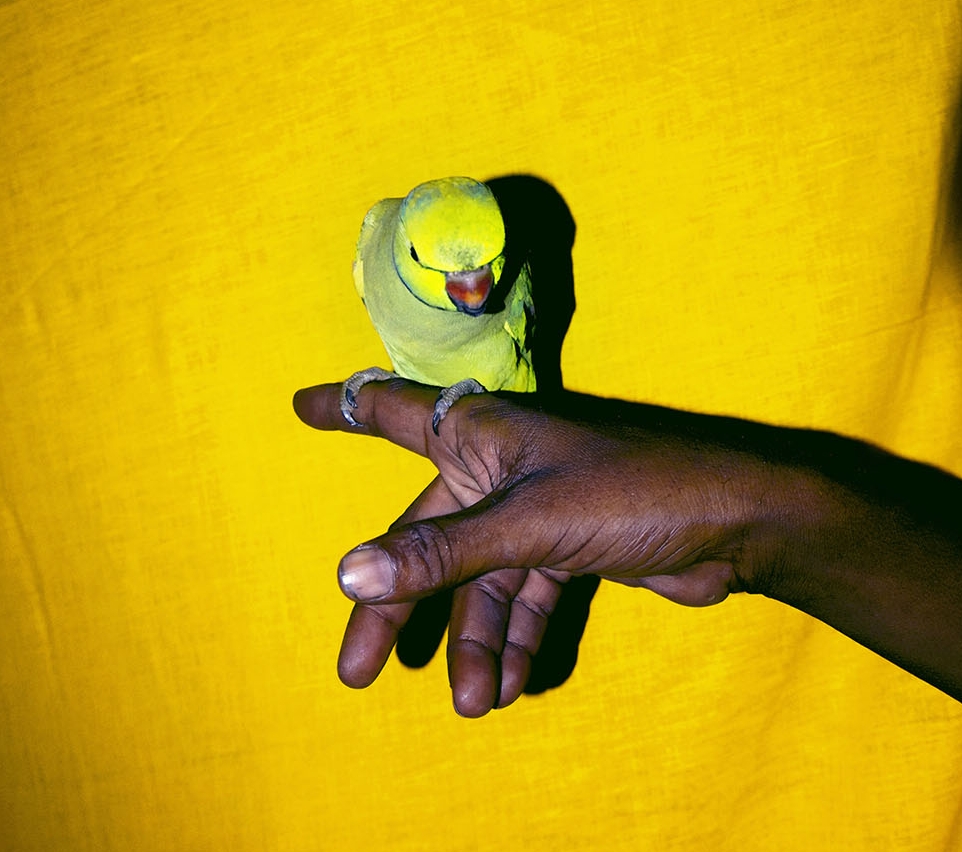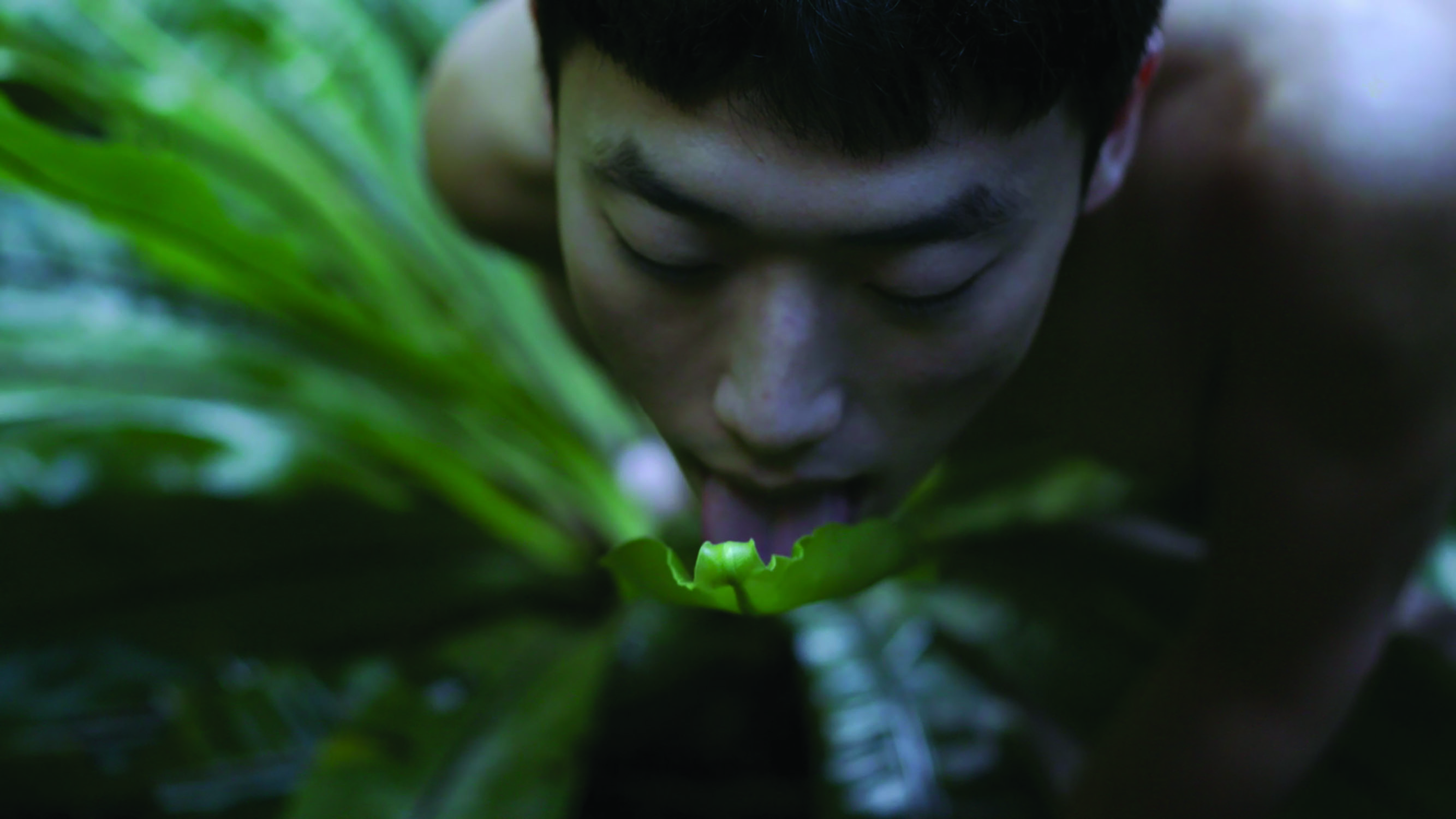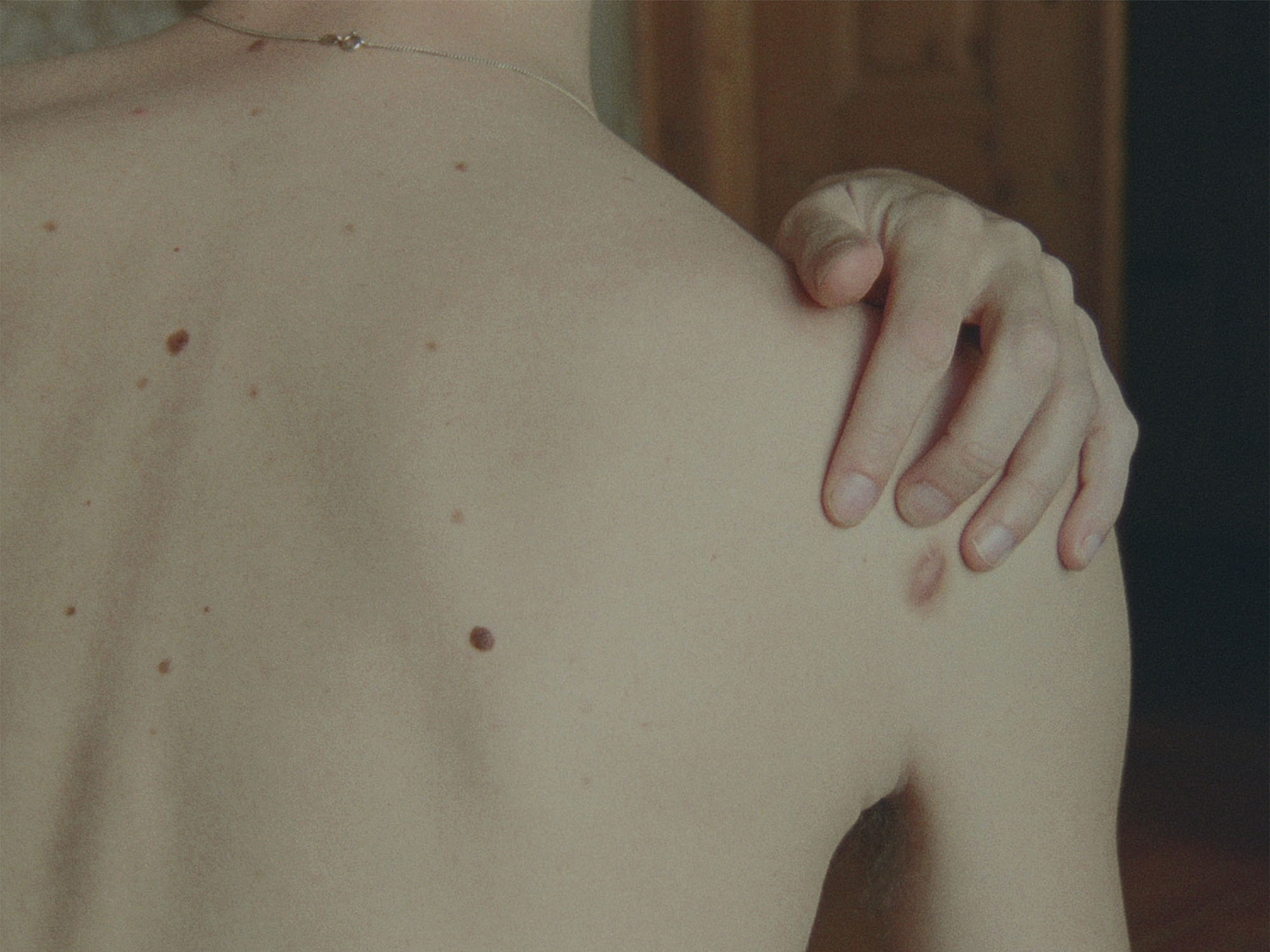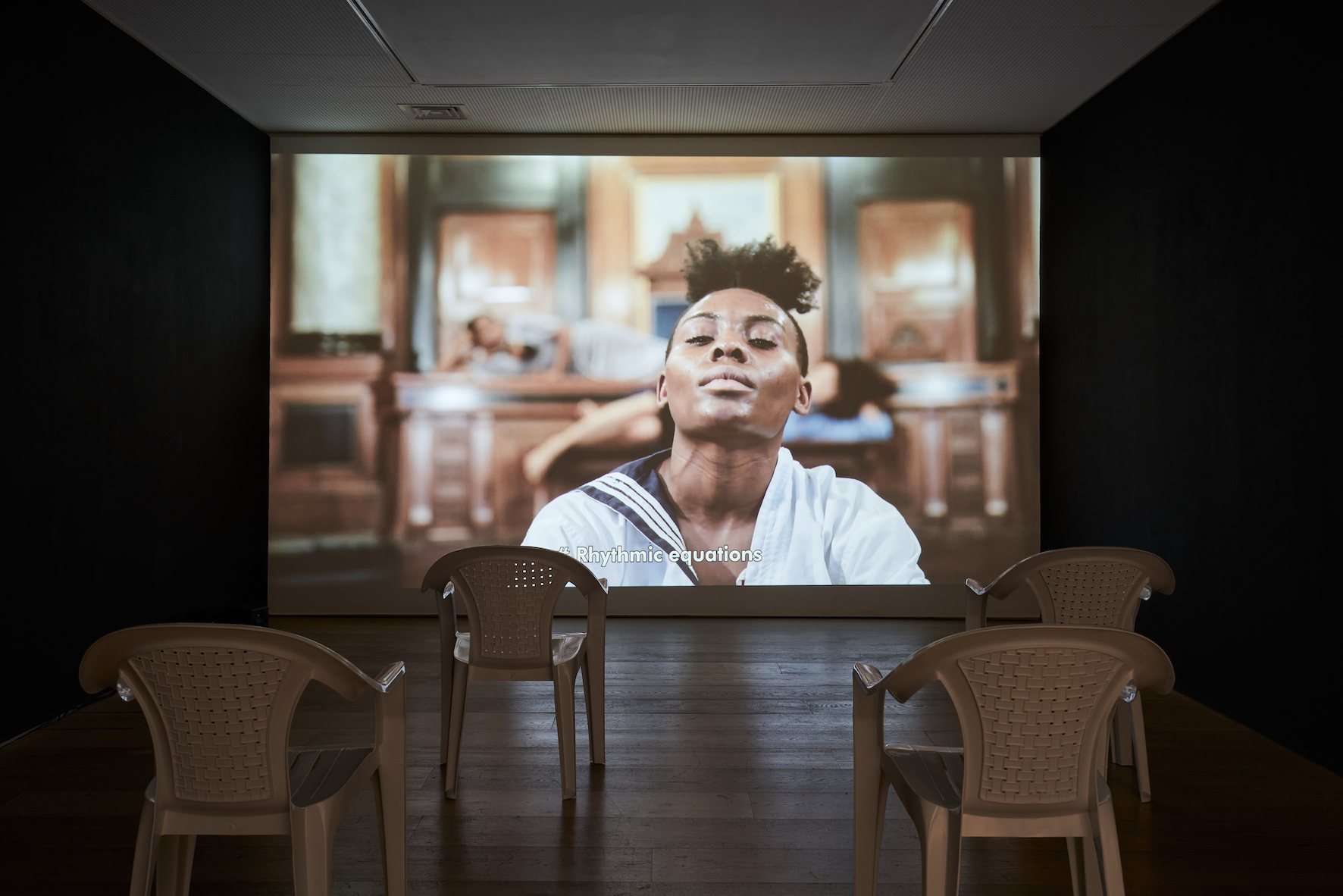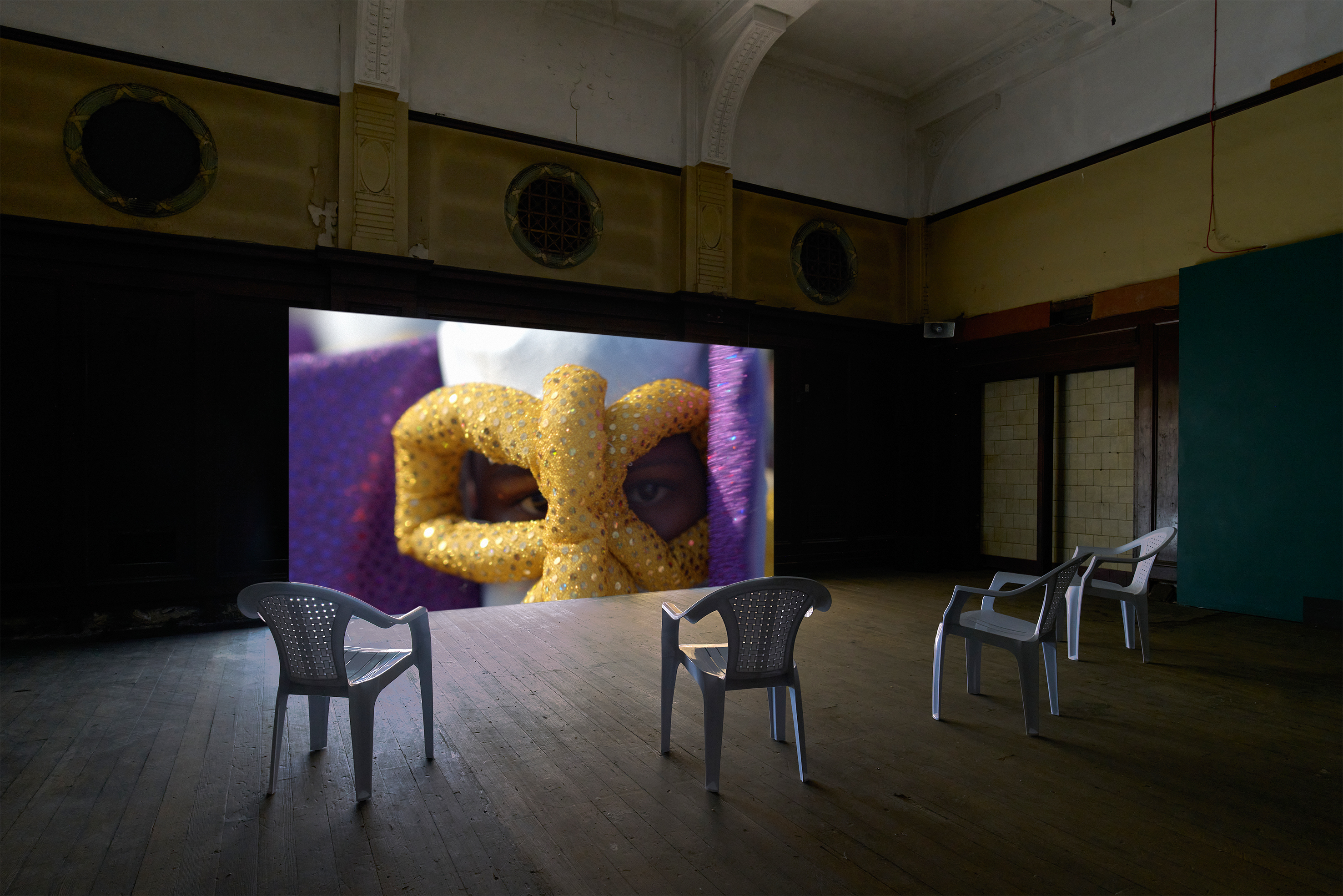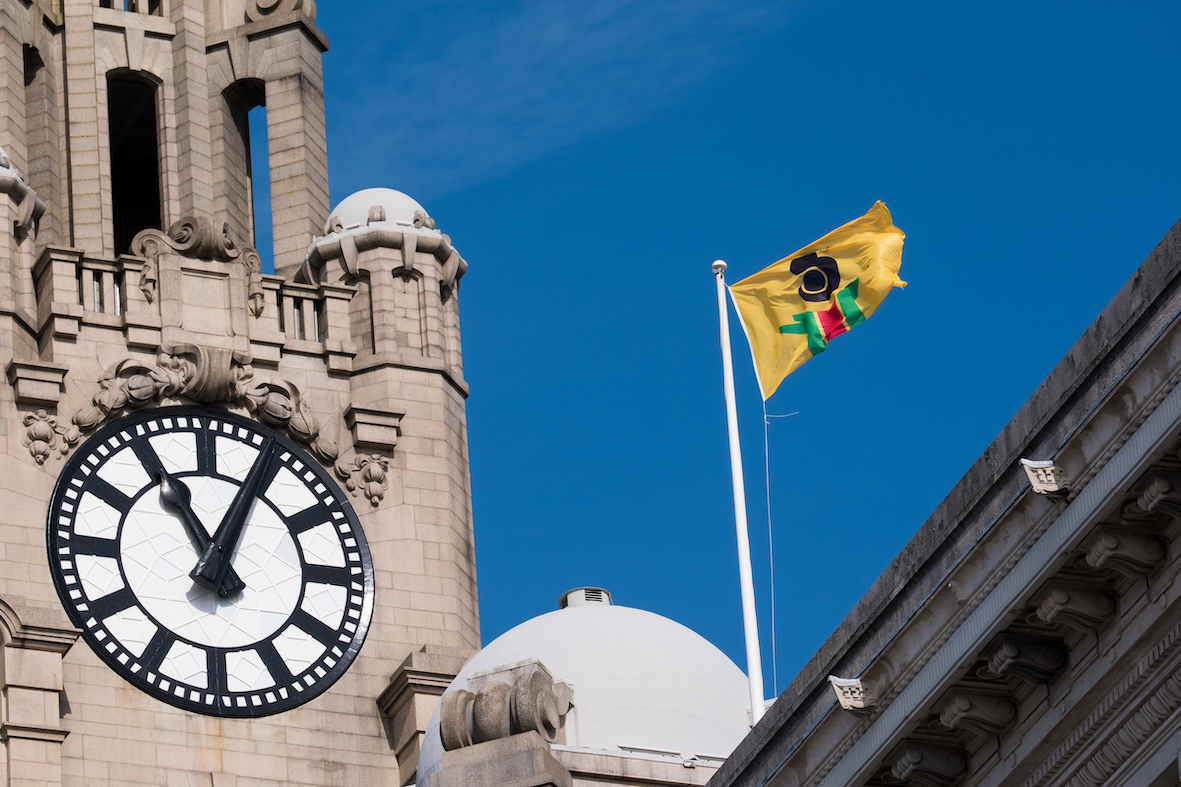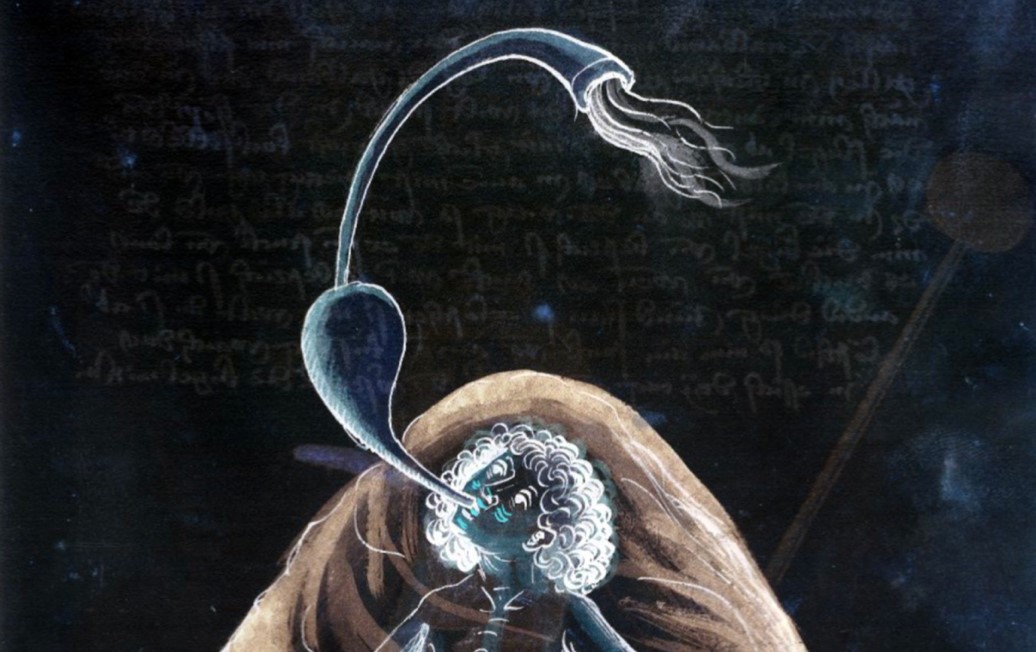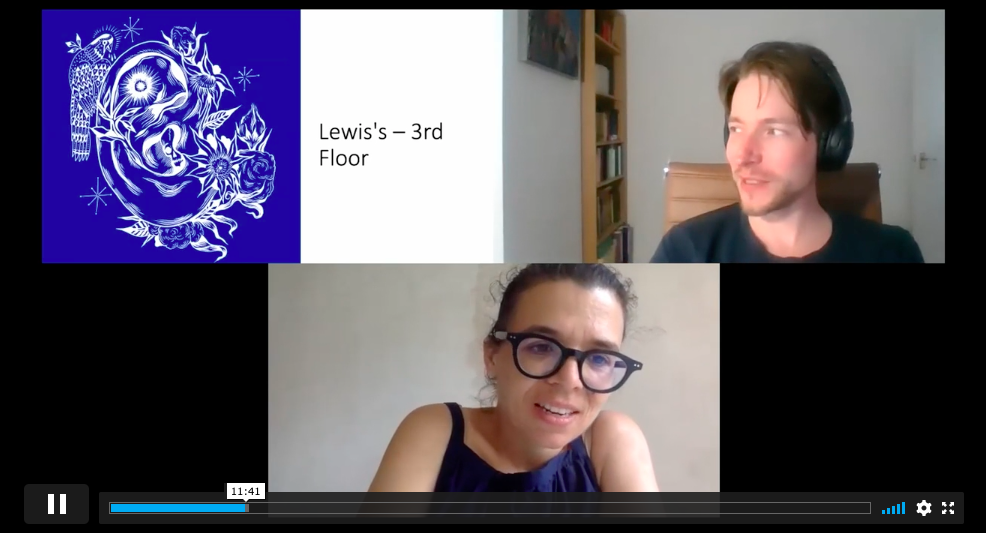How can artists show violence with sensitivity? Painter Ebony G Patterson discusses her portraits of gang members in Jamaica. Photographer Sohrab Hura explains his response to social media violence in India. We are joined by curator Catalina Lozano whose interests and curatorial practice have been increasingly involved with historical research within contemporary art. She is particularly interested in minor narratives and the revision of dominant historical narratives.
Art Against the World
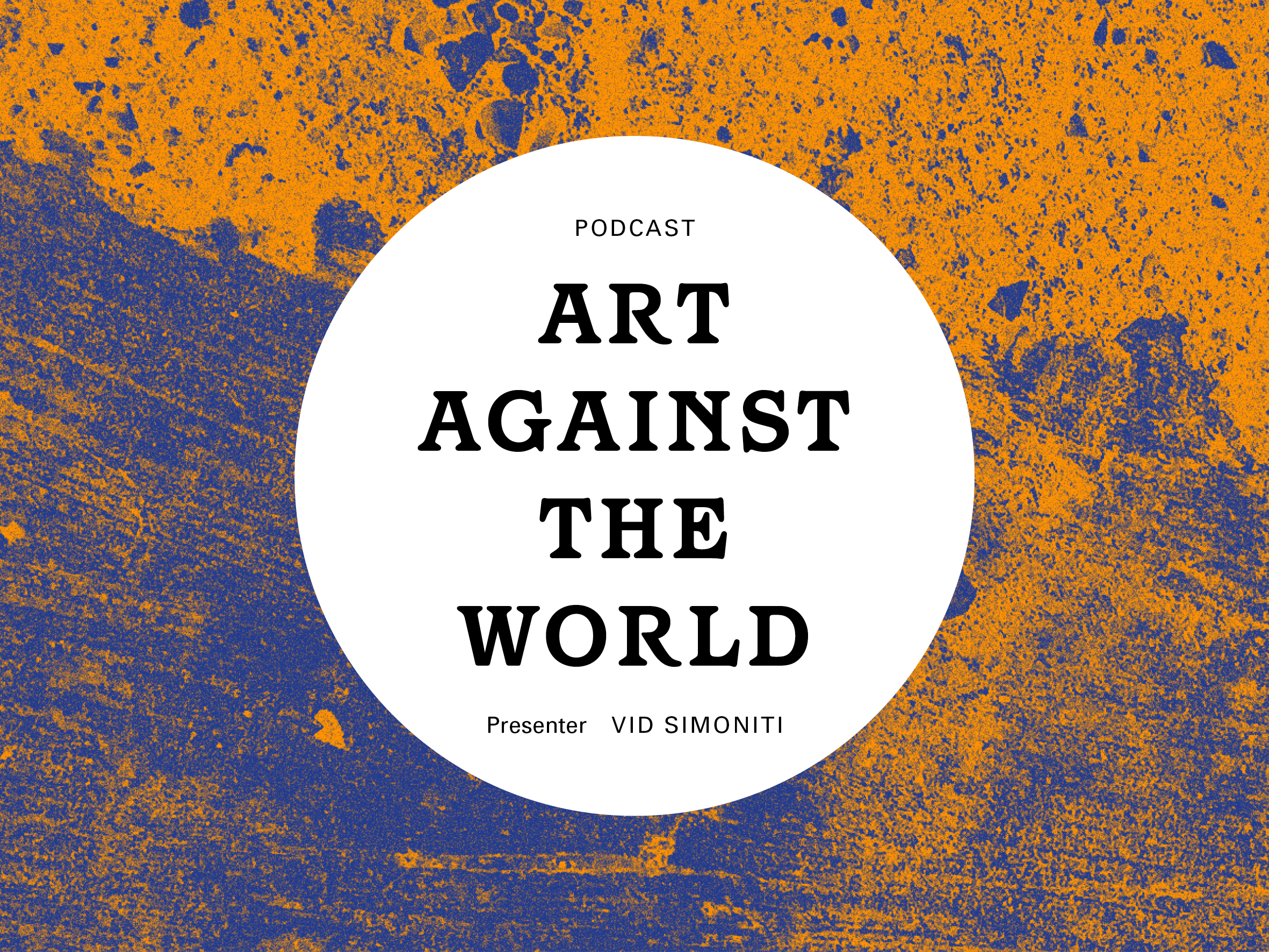
Can art change the world? In this six-part podcast series, we meet ten LB2021 artists, whose work responds to pressing issues such as the climate catastrophe, our changing bodies and legacies of colonialism. Hosted by Vid Simoniti. University of Liverpool / Liverpool Biennial co-production.
Introduction from Vid Simoniti
Contemporary art is the most politically committed of the arts, but it can also be experimental and hard to grasp. This paradox has always troubled me. In this six-part podcast series, I try to dispel some of contemporary art’s mystique, while staying true to art’s enticing complexity.
Across six episodes, I interview some of the artists showing at the Liverpool Biennial 2021. From environmental art in Brazil, to portraits of gang members in Jamaica; from legacies of colonialism in the UK, to social media photography in India: the themes we discuss span the globe.
While these political contexts are diverse, I am struck by how many artists today weave their beauty out of highly challenging situations. Sometimes their work is touching, at other times darkly humorous, but all of it shows the need for imagination in difficult times.
But don’t just take my word for it. All worthwhile art demands a critical response—and I hope you will make up your own mind about the artworks we discuss.
The Liverpool Biennial “Art Against the World” podcast is scripted and hosted by Vid Simoniti. It is a University of Liverpool / Liverpool Biennial co-production. Sound design is by Luke Thomas.
Episode 1: Violence
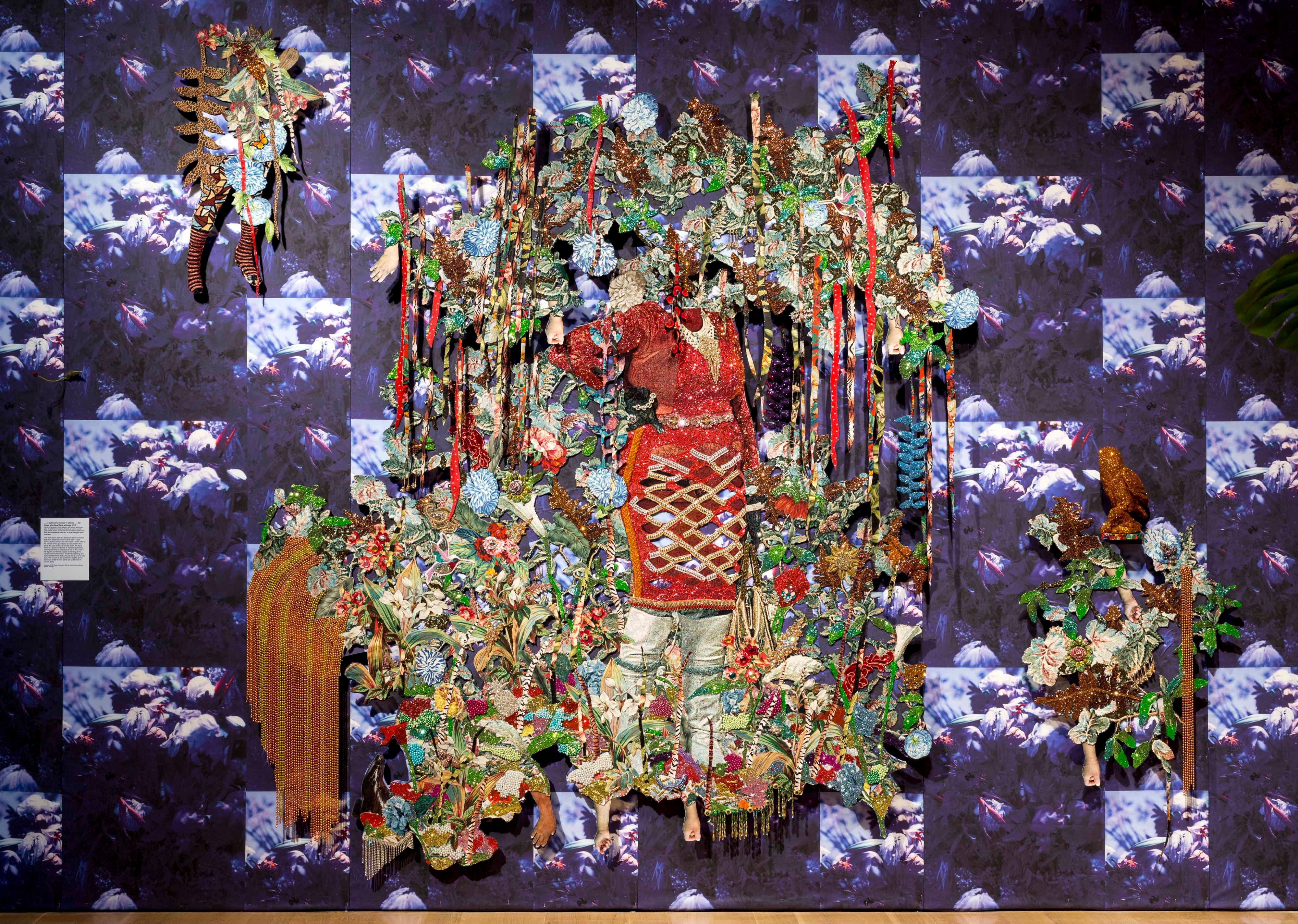
AATW – 1. Violence
EGP: Ebony. G. Patterson
VS: Vid Simoniti
SH: Sohrab Hura
CL: Catalina Lozano
EGP: When, you know the incursion happened over our course, a few days, and so many people were killed, and it was just always shocking to me that you never saw images or names of people, and to not be able to account for those bodies just didn't sit well with me as a person, and also just didn't sit well with me as an artist, so I did the only thing I knew I could do.
VS: There is a simple theory about violence in images. The simple theory says that if we actually see a victim of violence, we will be moved to anger and to pity. That's why we have photojournalists reporting on wars and disasters from the world over. But, of course, the simple theory is too simple, quickly our empathetic responses become numbed. Worse still, images of violence and misfortune, in fact, make us happy. They appeal to our predatory impulses; they titillate our blood thirst. This, if you like, is the paradox of violence in images. If you do not show the violence, you are not telling the whole truth. But if you show the violence, you make it worse by transforming it into a spectacle. There are no simple answers here, each generation of artists has to negotiate the paradox on you.
VS: Can art change the world?
VS: Of all the art forms contemporary exhibition art is the most politically charged, but often the most incomprehensible. If you visit a gallery, you might easily find yourself faced by say, a tiny piece of blue tac on the wall, only to be told by the gallery guides that the artists wanted to interrogate some deep topic like the infinity of time. But, while there is a lot of such artistic white noise, the Best Contemporary Art today illuminates some of the most pressing problems that we face. In this episode of Art Against the World, we talk to two artists who investigate violence through images. The painter Ebony G. Patterson, whose work responds to state and gang violence in Jamaica, and the photographer Sohrab Hura, whose work thematises populist violence in India. We are also joined by Catalina Lozano, an independent curator based in Mexico City. My name is Vid Simoniti, and this podcast is sponsored by the Liverpool Biennial and the University of Liverpool. You can find the work of both artists on the Liverpool Biennial website.
EGP: I'm Ebony G. Patterson and I'm an artist. All the way back to undergrad I was always concerned with ideas around beauty and what that meant and around the black body and also to violent, a kind of violence that happens to that body. I mean, in the beginning, it was more autobiographic, and I think that you know I just got to a point of who cares about my vagina anymore. Why do I want to like to draw my vagina over and over again? So, and so I started to reposition that and look out.
VS: Ebony G. Patterson is a painter best known for her portraits of men involved with gang violence in Jamaica. Drug Trafficking gangs, also referred to as posies have historically wielded great influence in the Jamaican capital, Kingston. It's this world that Ebony turned for her subject matter, her ‘Gangsters for Life’ series, which she began in 2008, are mixed media portraits of young Jamaican men. The most striking thing about these works is the way that faces are drained of colour, while the necks are often shown in deep brown, the faces are executed in lighter pinks, or left in an uncoloured canvas white.
EGP: There was actually an article that I had seen in Jamaica Star which is like our afternoon tabloid, that talked about men lightening their skins to elude the police, and so I started thinking about that in relation to ideas around beauty and ideas around masculinity or a shifting kind of global conversation around gender and the way men were kind of reimagining themselves and especially how the machismo was being reshaped and redefined by a kind of feminine tool and how that then plays out on a body that is poor, disenfranchised and dark and that how in a bottle of cream for them there is agency, right, so I take this really grotesque practice and I erase myself into presence.
VS: I'm looking at one work, a large gouache painting entitled ‘Blinkers One’ from 2009. He is a man of about 20 portrayed head on, returning the viewers gaze. The face skin tone is a light pink, lips of flaming magenta. His neck, a contrasting deep brown is elongated in a way that gives him a kind of Rococo elegance, like a flamingo or Parmigianino’s Madonna of the long neck. His hair is a halo, and the background is a wallpaper of roses. From a mug shot format, Ebony has elevated this image onto the level of a religious icon. I now understand what Ebony means by saying that this man has erased himself into presence.
EGP: So, skin bleaching has you know, it has a really long practice in the black diaspora certainly not new, you know, you flick through the back of any 1960s Ebony Magazine, and there's ads for these things, and I can vaguely remember even learning about slaves concocting chemicals to strip away their own pigments so that they could mobilise themselves from the field into the house because of the shape politics. And so, in those works, I was stripping the skin, elongating the necks, and then the face was all of these like pinks, and I was ariens and ocas. And then he always had these really beautiful plump red lips, and the eyes are always drawn. And so just thinking about like the jarring of the lighter face versus like the much darker skin in the very way that we think about like say when we think about paintings of like illumination or you know, paintings with cherubs or children, the faces always seem to be lit from within. Was kind of thinking about these, these bodies that were also touring, you know, volatile thinking about them almost to as like deities, as a way of suggesting that these bodies to are dignified, and that they are you know, they are worthy of dignity.
CL: Hello, I'm Catalina Lozano, an independent curator based in Mexico City, and also I'm director of programmes for Latin America, for Kadist. In terms of how these work deal with violence I think these beauty rituals like bleaching your skin, and they are so associated with hegemonic ideas of beauty, the ideas of bettering one's life through lightening the skin. So, I think that's there is a violence already embedded in that. I think there is a reference, direct reference, to gang violence and perhaps the shape that gang violence takes in in Jamaica, where Ebony is from, but also it shows how these highly profitable underground economy that is the drug trafficking also exists at the expense of the life of people of colour and poor people in countries that are struggling with this violence. I mean, I live in Mexico, and I know that's the case here too. People become disposable for this kind of economy. So, and these are economies that work and are profitable, because people mainly in the so called first world buy the produce, not so there is the injustice of colonial violence that I think it's still playing out in this economy.
VS: In 2010, Ebony's ‘Gangsters for Life’ series obtained a particularly violent reference point. After falling out with his political allies, Christopher Doris Koch, the drug lord ruling the Tivoli Gardens neighbourhood in Kingston was ordered to be extradited to the United States. Koch ran his criminal posse like a pirate political organisation and ruled the Tivoli Gardens neighbourhood with an iron fist, but he was also revered by some inhabitants for providing them with protection and opportunities. Koch supporters barricaded themselves Within the Tivoli Gardens community, and the government ordered a violent incursion by the police and the military. Ebony's artistic response was a work called ‘of 72 Project’.
EPG: With the ‘of 72 Project’, um, you know, like I was home during the time the incursion had happened, people were calling into the radio, radio stations, you aren't seeing a whole lot inside the heart of Tivoli coverage, you know, like the local media was only able to be on the perimeter, so what was interesting is that there was a British network, I think it was the BBC, because I remember a British sounding broadcaster who was able to get on the ground and interview a couple of people who were fighting for Christopher Koch, who was awaiting extradition, people from the community were told that they should get out and that they should seek refuge elsewhere. All the men from the community were rounded up and taken to the arena, and they were photographed and fingerprinted. All you’d keep hearing what the number 72 and then eventually became 73, and then it would go back and forth between 72 and 73, and it was just always shocking to me that you never saw images or names of people, and to not be able to account for those bodies just didn't sit well with me as a person, and also just didn't sit well with me as an artist, so I did the only thing I knew I could do.
VS: According to a commission of inquiry into the incident, almost 70 civilians died, including at least 15 possible extrajudicial killings in a conflict that involves over 1000 soldiers and police. Over 4000 young men were unlawfully detained and mortar shells were fired into Tivoli Gardens, the state used the military to turn against civilians. In 2011, when Ebony made ‘of 72 Project’, these facts were just beginning to emerge, you can find the entire project online. It consists of 72 really quite striking images together with a prose poem, describing the loss of these people from the position of their loved ones. Each of the images contains a black and white photograph of a man sourced from online criminal databases. The man is then covered with a bandana to preserve anonymity, and gently embedded in a beautiful collage of rhinestones, feathers and butterflies.
EGP: I Also remember to in the, in the interview that this person from I think it was the BBC, I'm not sure, that when he was talking to some of these men who were there to fight for Christof Koch, all of them were shrouded they were all concealing their identities. So, I shrouded them all, and then used the bandana as a way of framing it. So just thinking about, like, the history of the bandana as it relates to popular culture, you know, like it's an outlaw symbol, but then they're all haloed you know, and they're all shrouded. So, there's this question that's being asked, who are these people because I didn't know who these people were? And then again, saying that even these bodies deserve dignity. Like even if in the mix of these people that there were people who were there fighting for, for Koch, that even that body deserves dignity too.
VS: Curator Catalina Lozano again.
CL: Thinking of beauty in contemporary art has many layers of complication, let's say, there has always been and will always be artists whose practice are quite eye pleasing, I guess for most people, but that doesn't mean that beauty is a given I think, and I think Ebony’s work is a very good example of how this beauty is in a dialectical relationship with horror and violence. So, it's not just beauty. There is a need for beauty because the background is so violent.
VS: Ebony’s works covered gang members with beauty, with unexpected prisoners, butterflies, feathers, colours, gemstones, and the sheer display of her craft as a painter elevate these images. The men she portrays are certainly far from being blamed as victims though, to use that favourite word of contemporary discourse, problematic. We might say that Ebony's elevation of drug lords’ soldiers would have been seen as problematic at the time of their making, and perhaps any interesting depiction of violence will be. However, the interesting thing to do is surely not to moralise here one way or another, but instead to notice that the role played by the mechanisms of beauty and prisoners is a really interesting one. Within the art world, by pleasing art is often dismissed as kitsch. But here, beauty helps us achieve a kind of a perceptual shift. We do not see these figures as agents of individual violence, such as firing a gun or wielding a knife, but rather as victims of violence of a less visible kind of systemic and economic violence of the international drug trade, which restricted these men's life choices. It is a such a nice work seems to say that these men are deserving of our attention and of dignity.
EGP: So, I often think about us as bees and flowers, you know, the bee and the flower, the work of the flower, the people are the bees, and what is the lure that kind of holds our sucks the viewer in and holds them in place? Because I also recognise that we're incredibly superficial, you know, we're visual creatures, and we love to look at things, we really do, and you know, it's why the selfie age is what it is, you know, so what does it mean to then also tear people away from our are trying for a moment to get people to look away from themselves and look at something beyond themselves, and then using beauty as a way to talk about these kinds of ongoing traumas that are just tough to deal with.
SH: The first time it hit me was when my parents got on to WhatsApp, when they started forwarding me messages. I mean, there's nothing wrong, morally speaking those messages, but they're all fake, and it was very difficult to try and explain to them that that was fake news. We all were too late to catch on to this. It was already triggered certain things; certain political narratives were being created. By 2013, it kind of manifested itself in political campaigns, I think the kind of things we were hearing which were quite vitriolic, and the way people were talking about you know, people from a different space, minorities, so on, it changed things for me. So, photographically, I started to also react aggressively back to the world.
VS: This is the photographer Sohrab Hura, describing the background to his photographic project ‘the coast’ from 2019, set on the coast of India. India, the world's largest democracy, was also the first to be affected by the recent global turn to populism. Narendra Modi won the 2014 election with his own brand of Hindu nationalism. He received the second mandate in 2019. Modi's success has been largely attributed to his command of social media. Many commentators, however, have pointed out the uncomfortable connections between Modi's campaign and sectarian polarisation fuelled by the same social media channels. Rumours spread by WhatsApp have fuelled anti Muslim violence in India, leading to lynchings, with graphic videos shared by the perpetrators. Sohrab Hura response to these new forms of violence is not documentary, but allegorical. The ghost is a series of photographs taken during religious festivities at an unspecified village on the Indian coast. They can ignite Hura’s photographs show people bathed in the cameras flash in a way that recalls the visual language of street photography. A child raises a rock, boys to hit his companion on the head with it, a tear trickles down a woman's face, a heavily made up youth grins in the dark, an animal is caged, a man appears covered in blood. These are images of masquerade, where we are never quite sure what it is that we are witnessing.
SH: There's a lot of masquerading happening in the coast. I have photographed portions of the sea in this one village in South India where after religious festivity, they go into a state of trance to get quite violent. The masquerading happens because of everything that people have prayed for, they masquerade as gods or they masquerade, you know, as beggars, they're praying for money. They Masquerade as cops if they want to join the police and there's a lot of exhaustion and they all take it to the sea. Everyone goes to the sea at night and even during daytime and there is a letting go that happens in the sea, there's a washing away of the mask. The coast for me, becomes more metaphorical because I made these images at a time where things are going wrong, and when I think about 2014, right before our general elections, where the current political party came into power for the first time, a lot of people wore the mask of the current prime minister, you know, there was a sea of masks at that time. So, in a way, like for me, the idea of the mask also goes back to these moments.
VS: The curator Catalina Lozano, again.
CL: In this series ‘the coast’ we see people celebrating or in a sort of ecstasy by the seashore, they look as if they're surrendering to a force of nature, they're kind of incredibly happy, laughing, washing themselves in the ocean, and I think other images in the series search show quite intense moments in sort of what seems to be a ritual of some sort, where people are kind of banging their heads against coconuts and have blood all over their faces. Some of the images are ambiguous enough to make us wonder if they're fabricated of how documentary they are.
SH: Photography is a very violent medium, pointing the camera at someone is also a violent act in itself. But today, there's new sort of communication that is happening, which is only based on images means, you know, when I would go to a friend's house, someone working there, you know, would actually share WhatsApp images with us, videos, some of them were quite funny, some of them were strange, some of them were actually quite violent, and yet, they found it funny. And what I'm really dependent on right now is to kind of try and gauge directions within which image making is shifting. So maybe the images the blood, maybe they're from a religious festivity, maybe the person was excited about being portrayed. I mean, that is actually the truth, and there was a machoism and even competition happening because whoever was more bloody, they felt like they would get more attention.
VS: To his already complex work, Sohrab’s has added yet another level of meaning, combining the photographs with a short surrealist story, called ‘The Last Head and the Bird’. In a video will listen to Sohrab’s story, while we are shown the images. First, a woman is shown photographed at an angle so that she looks like she is missing her head. Then the familiar images again, a child with a rock, a heavily made up youth, a caged dog, a man with blood on his face. This version of the work is difficult to watch, So Hura’s short story bleeds into jarring music and images appear always two at a time with ever increasing frequency.
SH: The short story when it's about this woman whose head has been stolen by her obsessive lover. There's also this fortune telling the story who keeps telling her crow, telling her that it's a parrot for the bad cough. There's also a hint towards the end of the story that it's a cycle this keeps happening and she keeps going back to buy a crow thinking it's a parrot because she's lonely and she needs company, and then there is also the idiot photographer in that because I was also getting quite aware of my own self kind of partaking in the silence in some ways of being part of that aggression when I was reacting back to the world.
SH (Section from Work): She picked up the cage and shook it hoping to feel a movement inside, but only the open node rattle violently inside the frame, known as put the arms around as you stood with the empty cage down, I’d love to buy myself a new parrot from the fortune teller tomorrow.
CL: In another work, ‘The Last Head Under Bird’, violence becomes a lot more explicit, and it is through mostly found images, she kind of creates a form out of this formless mass of images produced and distributed on the internet. What's most violent about social media is not so much the images themselves, but the way they're distributed.
VS: At the end of the video, so Hura’s photographs are replaced with images from WhatsApp groups and false news websites. We see festivals, guns, dogs, memes, children, phone videos of a migrant worker being hacked, of an alleged rapist beaten to death of nationalist rally of lynching, all shown at a speed that eludes comprehension. This is no longer staged, but real violence propelled forward by the new media landscape.
SH: This network that has come about, this vision network where I see videos where someone's throat has been slashed, and you have 10 people around actually filming it is made us apathetic. Maybe this manipulation of reality had always existed around us, but today, we're noticing it more and more. And there's a lot of violence, which is propagated through these manipulations of reality, especially back home. In the last five, six years, we'll be inundated with news about lynching, which have been, you know, engineered through WhatsApp, rumours and so on. We all know that riots are engineered, they don't just happen, you know, and a lot of these kind of rumours being spread, and a lot of people who end up being Muslim, get lynched, or have been getting lynched in the last few years, and all of it is being condoned by the state. For me, the work is about recognising this larger system, and in a way, alluding to it to the fable that I'm trying to create.
VS: Susan Sontag, perhaps the most eloquent critical of violence in photography, wrote, to photograph people is to violate them by seeing them as they never see themselves. Just as the camera rises sublimation of the gun to photograph someone is a sublimated murder, a soft murder, appropriate to sad, frightened time, end of quotation. When I first saw Sohrab’s work, I must admit that I felt some discomfort, along the lines described by Sontag, the participants of the festival are shown in a way that is sometimes standard, but mostly harsh and terrifying, and probably not how they see themselves. However, Susan Sontag was not on WhatsApp. So, Sohrab’s work reminds us that violence in images no longer happens in photojournalism, or even on TV. It occurs through peer to peer channels such as WhatsApp, where ethical guidelines are set simply by the centre’s own conscience.
SH: I don't know what the role of photography is anymore, but it's not to document things. Social media, and this kind of explosion of images today is like throwing like this big rock into a still pond. So, there's been a big splash, we're still in the moment of that splash. But I think we need to wait for some time for the pond to get still again to see where we are now, you know, because we won't be in the same place as we were before.
VS: I began this episode by considering the paradox of violence in images. If you do not show the violence, you are not telling the whole truth. But if you show the violence, you can end up making it into a spectacle. The paradox must be solved differently in each era of our visual history. If something unites Ebony G. Patterson's and Sohrab Hura’s work, I would say that it is that towards the allegorical and the symbolic. In Ebony's art, victims of systemic violence are endowed with a mystic beauty of religious icons. In Sohrab’s photographs, religious festivities become an allegory for the deceptions of social media. Perhaps we might speculate, this turn towards the allegorical and contemporary art is due to the increased complexity of the political language today, far from being dumbed down, the language of politics in the digital age has become a dense forest of meanings and counter meanings of cryptic messages from populist leaders, of endless common threads of jokes and anti-jokes. As Sohrab Hura's work shows, ours is the world where real violence can be precipitated through a funny meme. While a photograph of a man with blood running down his face can be just innocent play acting.
VS: Thank you very much for listening to this episode of art against the world. You can find information on the artists we spoke about at the Liverpool Biennial website. Speak to you next time.
Episode 2: Forest
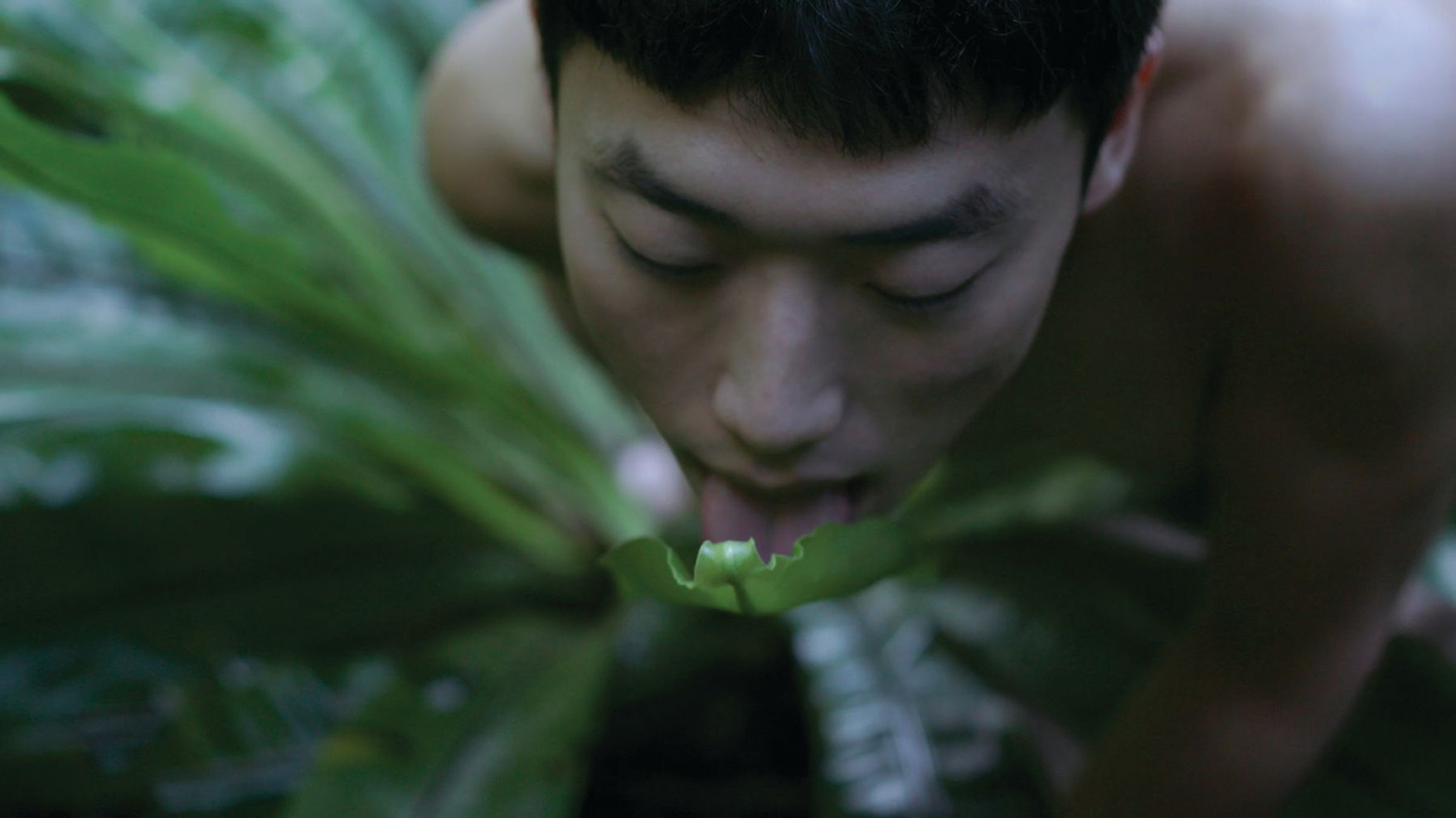
How can art respond to ecological challenges? Jorge Menna Barreto relates how his “stomach sculpture” protects the Amazon rainforest, and video artist Bo Zheng discusses whether we can have sex with plants. We are joined by curator Margarida Mendes whose research explores the overlap between infrastructure, ecology, experimental film and sound practices – investigating environmental transformations and their impact on societal structures and cultural production. Presenter Vid Simoniti.
JMB: Jorgge Menna Barreto
VS: Vid Simoniti
ZB: Zheng Bo
MM: Margarida Mendes
JMB: At sunset and sunrise, all species are really expressing themselves, right? It's a real party, and we did stop at monocultures to record the soundscape and it was like the deadliest sound or absence of sound that we have ever heard, right? It's a really, really heavy silence because it's just one species, no birds, no insects, no nothing. It's just yeah, it's just plain silence.
VS: Forests cover 30% of the world's land area. They are the lungs of the planet. Yet, to an alien observing us from outer space, it might seem like trees are humanity's greatest enemy. As soon as we were able to wield the Flint axe we took to eradicating them the best we could. As we saw in 2019, when the wrong Amazon was burning, we continue to destroy them now making us, to continue the analogy, the planets lung cancer. As the environmental movement gained strength in the second half of the 20th century, artists were among many who responded to the pangs of our ecological conscious. Joseph Beuys, the unformed reboiler of the art world, concluded his career with the project ‘7000 Oak Trees’ in the 1982, for which he had that many trees planted at Documenta, and other locations. In 1992, the artist Agnes Denes went further, she planted 11,000 trees in a mathematical pattern for her work ‘Tree Mountain’ located in Finland. Such works are now the classics of contemporary art, and many artists continue making eco art today.
VS: Can art change the world?
VS: Of all the art forms, contemporary exhibition art is often the most politically charged, but also the most incomprehensible. If you visit a gallery, you might find yourself faced with say, some socks smeared with mustard, only to be told by the gallery press release that the artist wanted to carefully consider some topical theme, like the decline of the textile industry. However, at its best, I believe that contemporary art can often also offer the most original approaches to the problems that the world faces. In this episode of Art Against the World, we talk to two ecologically informed artists who work with forests, Jorgge Menna Barreto whose art uses food to change the environment, and Zheng Bo in his video art people have sex with plants. We are also going to hear from the curator Margarida Mendes. My name is Vid Simoniti, and this podcast is sponsored by the Liverpool Biennial and the University of Liverpool. You can find the images of the art we are going to discuss at the Liverpool biennial website.
JMB: My name is Jorgge Menna Barreto and I'm an artist and a scholar. If agriculture is at the moment in Brazil, for example, responsible for around 90% of the deforestation of the Amazon, both because the forest is being pushed away, and the fields for the cattle are coming in, and the monoculture of soybean, which is destined to feed the cattle. It's also important that we think that you know, it's not farmers that are bad people, they're just producing the food that is being eaten. So somehow we are also implied in that problem, right? Those kinds of short circuits begin to make sense, and with my background, and when art and science specificity, I was like, oh, alright, so maybe what we're eating is shaping the landscape in a way. So, if food is our mediator in this relationship, we must have it as a protagonist of this relationship, and we're going to be talking to people's bodies more than two people's intellect, and we'll trust that the food that was served will tell the story to the cells of the bodies of these people.
VS: This is how the idea of ‘Restauro’ came about, when Jorgge was invited to participate at the Art Biennial of São Paulo in Brazil in 2016. He proposed not a traditional artwork but to take over the Biennial restaurant. The restaurant would only serve meals sourced from agroforestry, which is an ancient, indigenous Amerindian form of growing food in forests. Jorgge organised the restaurant in alliance with over 200 food forest farmers in Brazil, serving over 30,000 meals to the visiting public.
MM: My name is Margarida Mendes, and I'm a curator and researcher based between Lisbon and London. So, the work ‘Restauro’ is leaving environmental sculpture, as the artist describes, includes restaurant space, and a network of farmers and chefs, but also pedagogical encounters that are shared through meals. It imagines as Jorgge describes are mouse's cultural tools that are in where meals are seen as part of this environmental sculpture has the artists defence. This is also something I've written about when I thought about the planet as an extended stomach, where metabolic transactions occur through several scales, and there's a connection between the molecular and the planetary. It's a very timely critique also in the Brazil economy we live today, where there's a lot of indigenous land dispossession going on, and also murder of different indigenous activists. So, bringing back the idea of where food comes from, and how we relate to it, how we mobilise also the rituals of planting foods, distribution, and consumption is very important.
VS: That is all very well you might think. Serving vegan and ecologically produced food is surely a good thing. But what has art to do with it? Surely, an artist showing at an art pavilion should do something representational. Take a picture or record sounds or make a video.
JMB: Okay, so how do we bring the forest into the pavilion, right considering that the pavilion is right up here now happens and then the whole discussion started happening with the curators, and we went from ideas of recording the soundscape of the forest and bringing it into the pavilion are actually like bringing the plants into the pavilion and it was more about dislocating the forest than actually translating it. So I went back to ideas of translation, I went back to Robert Smithson to think about his ideas of sight on outside and then I understood reading the forest like in more depth that food could do this mediation, right? Like that once that the food that is produced in a food forest, that is somehow imprinted with a kind of complexity and its molecules, its nutrients, and it contains what I defended the idea of forest, right? so that the food that you eat comes from a monoculture has very simplified information in its organisation as matter. And the food that grows in a food forest somehow tells you the story of the forest, right? what I call forestness.
JB: So, but I want to introduce one very important thing, that is very often misunderstood. Civ owner right and the understanding of, of art, or what is often called in my structure of sorts, the social sculpture, the social dimension of art, would be a kind of theory.
VS: Jorgge’s idea to create a restaurant, a social project, and call it art, stems from the history of what the artist Joseph Beuys called social sculpture. Here he is speaking in 1980, “especially as this was my aim during my life to bleed through the borders of the art system, to reach the needs of everybody to participate, and to share in the element of creativity and work. So right my understanding of art, as in a way, nothing more to do is art” use of Beuys’s social sculpture, mixed political protest with angry, slightly mystical performances. For Beuys art no longer signified traditional art forms, such as painting, sculpture, or even video, instead, for him the word art simply meant any creative social action and in your relationship between members of the society.
JMB: I was looking also for a name to describe what, what I was calling this whole process, right? And the idea of social sculpture of Joseph Beuys was always very important and, and Beuys even referred to the forest as like one of his best examples of what a social sculpture is, which I find really interesting because many times the idea of social and Beuys is usually read through a human approach as if social only included human beings, like his activity in the classroom, his activity as a politician, but rarely the social in a way to include other species right, which is what happens in a forest you can look at a forest as a social environment. And I have always been very interested also in allergy seekers idea of the programme ambiental, which could be translated by environmental programme. So I, I thought, you know, of creating a hybrid term, or coming up with a hybrid term, mixing sculpture like, as in Beuys and ambiental, as an agency, and then I came up with that idea of environmental sculpture to refer to this sculpting ability of our digestive system.
VS: Socially engaged art, then should make a difference, but how do you measure whether it works?
JMB: it's difficult to measure if the message ever arrived, let's say, but we do believe that food both for what it had and for what did not have which is pesticides, which is, you know, a history of oppression, that it was relating to the bodies in a different way. And we got, like kinds of feedback that we would never expect from like, some people that were at the Biennial, right that are part of the staff, for example, and that would eat at the restaurant. Almost every day, one lady came to us and said, you know, Jorgge just wanted to cover something with you that ever since ‘Restauro’, I've been going to the bathroom every day. So and that was like, we cracked up, you know, laughing so much, because I mean, we never expected to have that kind of feedback that our project was somehow helping and, you know, in the transit of food through her body, and probably because of all the fibre.
VS: Social sculpture as practised by Joseph Beuys and similar pioneers was mystical and infuriating. For one performance, Beuys locked himself into a gallery with a coyote, for another, he spent hours nursing a dead rabbit. Despite what Beuys was saying the connection to social impact was far from clear. Today, some 50 years later, socially engaged artists such as Jorgge Menna Barreto, but also say Suzanne Lacy or Tania Bruguera, or Theaster Gates have taken the mysticism out of the equation. Jorgges’ restaurant contributes to more sustainable forests, with better digestive habits thrown in as an extra bonus. This new socially engaged eco art, it seems, offers completely pragmatic solutions to the world's problems.
VS: Margarida Mendes again.
MM: So, where I think my interest in eco arts lies today, using the very broad investigative quality that it has, where artists and different practitioners are getting together in a team to develop research around a particular geography, a topic or a conflict. So, there is a crossover between the position of the artist as somebody who, you know, works on institutions works on culture making, and still has a socially engaged activist practice. So, what I tried to do sometimes in my practice, and why identifying Jorgges’ very powerful and engaging work, is this kind of creation of the liminal space where there's a contagion between modus operandi, and where, for example, the tactical knowledge of farmers and people on land can be overlapped with the aesthetic sensibilities in the community, making sensibilities that artists also have. So, I think there's different strategies and tactics, or I would like them to be even growing closer these days to overlap these various fields.
VS: Truth be told, I feel conflicted about socially engaged practice. I think there is a paradox at the heart of it. Art in an effort to change the world exits the sphere of art altogether. If we imagine an exhibition entirely populated by socially engaged artworks, it would blend so seamlessly with our experience that we would not even notice an exhibition is underway. But another way to think about it, the one suggested perhaps by Margarida Mendes. would be simply not to worry so much about the label art, we could instead think more about its context. The Biennial we might think, is simply an opportunity to present every two years creative solutions to pressing social problems, be there art, or not art, and the ecological restaurant certainly seems to be one such solution. In fact, for the Liverpool Biennial forthcoming, Jorgge is already preparing a similar project, which will prepare plant-based food in collaboration with local growers in the northwest of England. But let Jorgge Menna Barreto to have the last word, pricing my point a little I asked him what it is that artists as artists can bring to the fight against deforestation?
JMB: We can normally deforest the way we're doing if we think of the forest is something that I'm not dependent on, right? if I had different images, if I had different words, if I had different ways to describe the forest, perhaps I wouldn't deforest that so easily, you know? I wouldn't think of it only as a resource, but as a way to support life on the planet, really, which is how the indigenous relate to the forest, right? So, I think art and education have an immense role in coming up creating more complex language to refer to these complex environments, for example, right? So, I find that a lot of my struggle as an artist and as an as an educator, is exactly interfering or intervening in that kind of repertory, that kind of language, that kind of image formation. I think that's, that's my role as an artist, right? I'm not a farmer.
ZB: The film starts with a group of six young man walking into a forest in Taiwan, and then they were looking for ferns, and then after they found ferns, they move their bodies into position so that they could become intimate with the plants. They use tongue, they use their hands, they use their body to, to become closer to the plants. That's the beginning of the film, and then as the film progresses, acts become more sexual. Chapter two, the it's, it's one young person who's having sex with one fern, it's bird's nest. And in chapter three, there are three performers, they look for ferns to expand their SM practice. In chapter four, there are two young men who looked for young leaves. The so-called fiddleheads of firms.
ZB: MY name is Zheng Bo, I'm an artist. Pteridophilia means love for ferns. So pteria is the scientific name for a lot of ferns, and then ‘philia’ is the word that we use for love. The work is the film project that I started doing in 2016 in Taipei in Taiwan, and it's an ongoing project. So, I've made four chapters of this film over the past three years, and I'm making chapter five for the Liverpool Biennial.
VS: I first saw Zheng Bo’s videos at Gropius Bau in Berlin, at an exhibition called the Garden of Earthly Delights, In the summer of 2019. The floor was filled with pots, out of which grew different fern plants. While four screens showed Bo’s videos. The videos are shot in mesmerising high definition. The forests are lush, green and pristine. The men are young, naked and handsome. If you saw Mary Beard’s recent programme about ‘The Nude’ the BBC, you'll know that objectifying naked bodies is not how we like our art nowadays. But Zhang Bo’s videos do not seem worried about that at all. Here, the sexual act is shown with all the tantalising beauty of a Renaissance painting. We see some bathed young bodies shuffling through the ferns in scenes of gentle copulation in the Sarah masochistic chapter penises and nipples are struck by thorns, but with the sultriness of a son Sebastian, pierced by arrows.
MM: The camera work that we see it's a very kind of intimate camera work that I like to call a form of tactile cinema. It has encompassing very slow zooms, or close ups. So, there is almost like sweats to these images, there's a very particular temporality to how images are fluctuating in this lush green space, and sonically, these videos also have a very particular dimension, because they're somehow suspended in this murmuring or almost silent space of the jungle, where we only hear the breath or the soft tickling of the leaves of the plants. So, we're in this kind of suspended abstract space of this intimate encounter.
MM: We might even ask, when we see these films, what senses do we share with plants?
ZB: There is no script, we always work on site, there are 12 human performers. But of course, there are a large number of plants that are featured in the film. So basically, we humans, you know, me, the cinematographer, the performers, we work with a forest, we work with plants, because the sexual performance we film are not something that we have practised for a long time. So, we have to practice it. While we're in a forest. You just can't. I mean, I guess some people may be able to dream kind of pre plan how to have sex with plans, but I would say it's always better to do it while you're in the forest.
ZB: You know, for me, I think having sex is, is another great way to interacting with other species, in particular with plants. I think it really forced us to expand our understanding of plants also, you know, force us to think about how to change our own body, and rhythm and sort of mindset in that situation. So it's, I think, you know, because it's kind of unusual, it's, you know, it's not something we do all the time with other species, I think really, sort of gets us out of the anthropocentric ways of interacting with other species.
VS: While the term eco sexuality might suggest a rather niche sexual interest. The deep erotic longing for nature has a long presence within history of art. As the curator Margarida Mendes explains.
MM: So, in recent art practices, and in the cultural domain, eco-sexuality is a very interesting topic being explored, and I'm thankful that you asked this question because I, myself have found in my lived experience this term really recently, but this is the way how I sense the world, and how I have a connection with nature and also spiritual activism. So, I'm still trying to make sense of what it means, but I find a very beautiful form of political and erotic agency in this term. And of course, if we look at art history through time, we can see already many many traces of eco-sexuality. Remember, for example, Georgia O'Keeffe’s, amazing paintings with this kind of vulva forms that are plants that also come through, you know, some of the image making in Judy Chicago's ‘Dinner Table’, in the ceramic forms that she has. But eco-sexuality is very, very present on the work of a filmmaker that I love and that I've shown several times whose Barbara Hammer, whose films for example, like ‘Tactics’, ‘Stone Circles’, or ‘Women and Love’, from ranging from 74 to 83 are crucial pieces to look and read forms of eco-sexual aesthetics. If we go to the cinema worlds, we have, for example, the very famous series ‘Green Porno’ by Isabella Rossellini that she started in 2008. There are very short clips that also talk to us about different forms of non-human erotics. They're almost like slapstick plays, but I find them quite enticing to think about this topic, and if we want to take even a more kind of conceptual take, perhaps we could even look into the work of Pedro Neves Marques that I know is spoken of in other podcasts here, of this series, in Pedro Neves Marques that for example, talks about the relation between taxonomy and plan for production in his work, he shows in that Terminator seeds.
VM: It might be worth contrasting Zhang Bo’s practice with that of Jorgge Menna Barreto, when I spoke to both of these artists, I felt there was something calming about their works as if these had imbibed some of these soothing properties of the eternal forest that they interact with. But their practices are deeply different. Jorgge’s agroforestry restaurant offers pragmatic solutions, while Bo’s film is erotic and dreamy. The difference between them is perhaps one of the key distinctions in the art world today, between action and reflection, between pragmatics and poetics.
ZB: I often think because I'm in Greater China, because of our sort of philosophical tradition, and also our political situation, right now, it's harder for artists in this part of the world to do more activist kind of works. On the other hand, I think, you know, like I said, because of our philosophical tradition, our tradition is we always change ourselves before we change others, by which I mean that I need to start thinking carefully about my relations to plants, I need to see the planet differently. I need to live differently. I think by changing myself, I can sort of start influencing others. So, I think that's what I'm trying to do in the film. I'm not providing the right or wrong, but I'm saying we need to start thinking about ethics, and I think making the film allows me the time and space to think about ethics of our relations to the ferns, specifically.
VS: Forests are the lungs of the planet, and yet, it is estimated that roughly half of the world's forests have been felled by humans, since we first started chopping down trees. The destruction of forests continues unchecked today. Just within the last 25 years, for example, we have destroyed an area of forests equivalent to the size of South Africa. This accelerating deforestation is one of the factors pushing us further towards the final climate catastrophe. The sad truth about our imminent self-destruction as a species, is that in order to escape our fate, we will need to completely reinvent our thought systems. It may well turn out that this is too much for our imaginations to accomplish, we would need to change who we are and how we live, including to point to Jorgge Menna Barreto, and to Zheng Bo’s art, what we eat, and how we love. So yes, contemporary eco art can at times be challenging, even weird. But then, the point is not defined Avant garde art easy or simple. Instead, it is perhaps to imagine how wonderful it would be to live in a world in which such art would come across as completely normal, entirely unremarkable.
VS: Thank you very much for listening to this episode of art against the world. You can find more images and resources on www.biennial.com. Speak to you next time.
Episode 3: Transitions
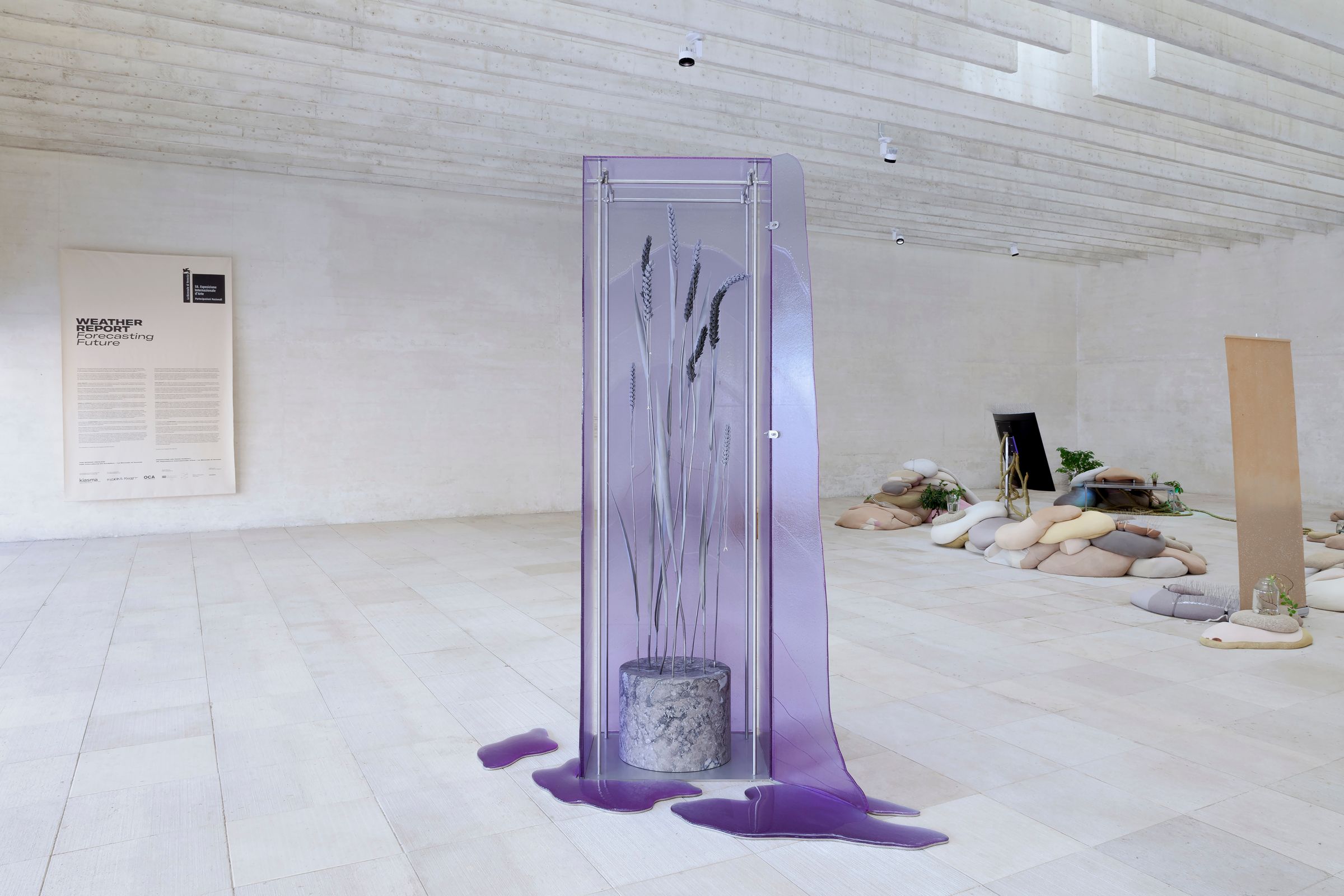
On art that reflects our changing bodies. Pedro Neves Marques’ film raises the possibility of male pregnancies; Ane Graff’s sculptures show how our bodies adapt to pollution. We are joined by curator Chus Martinez, whose curatorial practice is that of generosity, expressed through different techniques of care such as listening and voicing. Presented by Vid Simoniti.
Episode 4: The Port
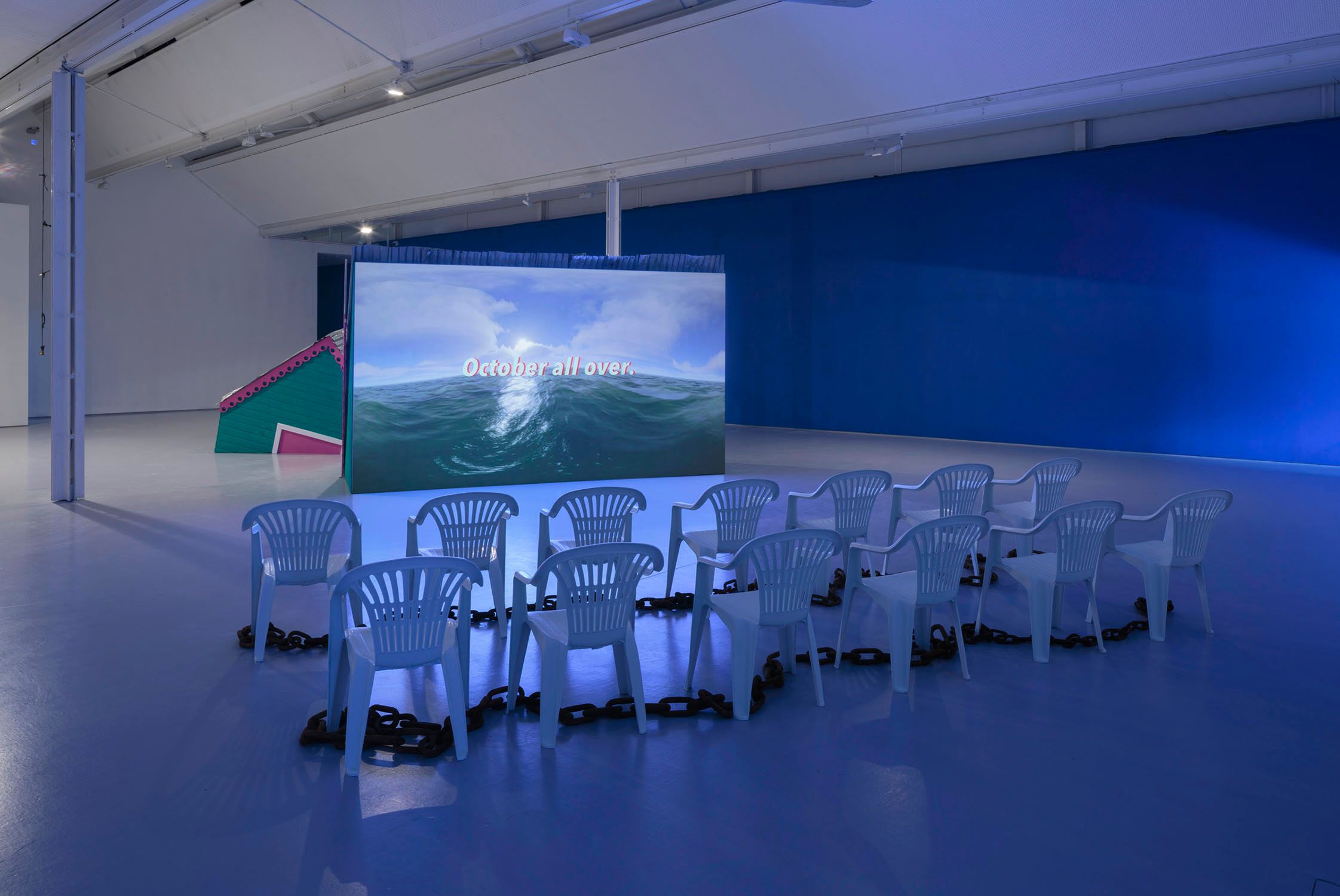
Art that portrays seas and migration. Alberta Whittle’s new video unearths links between climate change and colonialism.Invernomuto’s sound installation traces the influences of the Black diaspora on the Mediterranean culture. We are joined by lecturer in Visual Cultures at Goldsmiths, independent curator, and member of the Thought Council at the Fondazione Prada, Elvira Dyangani Ose. Presented by Vid Simoniti.
Episode 5: Speculation

Art that imagines alternative futures and pasts. Artist Larry Achiampong discusses the legacies of Afrofuturism today, while Luisa Ungar’s debates the role of fiction in the archive. We are joined by the critic Pablo Larios. Presented by Vid Simoniti.
Episode 6: What is a Biennial?
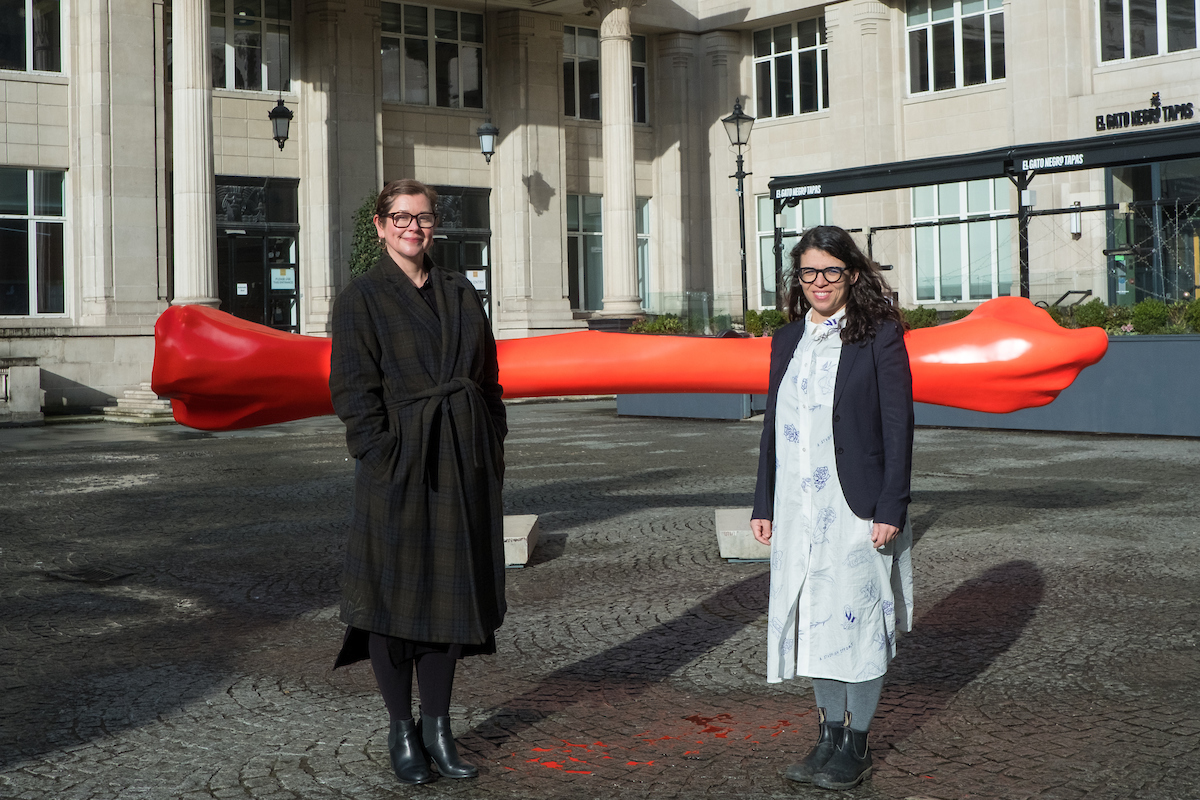
How do biennial curators weave a narrative out of diverse artworks? Liverpool Biennial Director Sam Lackey shares her experience; curator Manuela Moscoso discusses the process behind conceiving and delivering our 11th edition, The Stomach & the Port. Presented by Vid Simoniti.
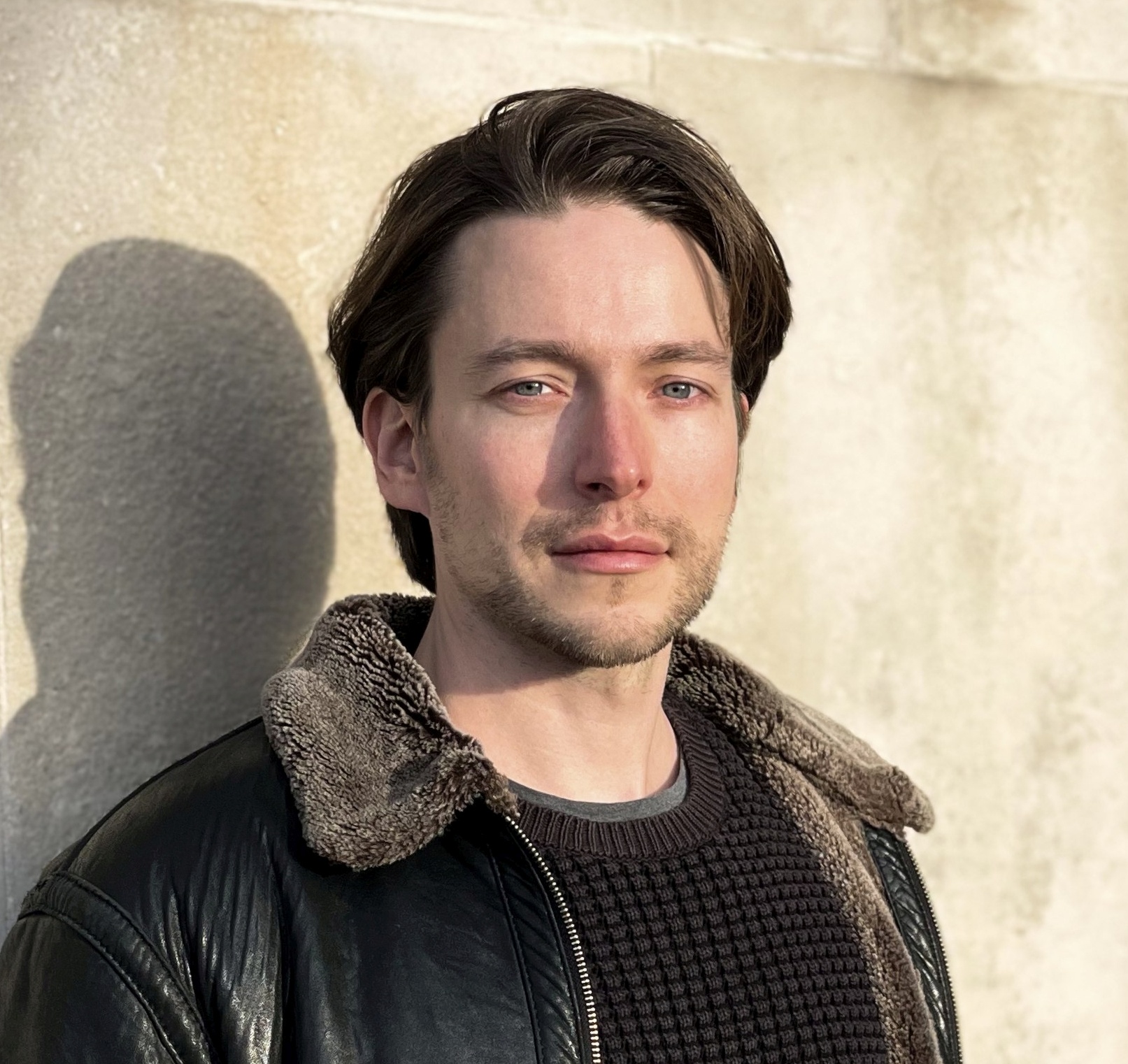
Vid Simoniti is a Lecturer in Philosophy at the University of Liverpool, where he also runs MA Art, Philosophy and Cultural Institutions. He has published on socially engaged art, art and technology, and the work of Adrian Piper.
@VidSimoniti

